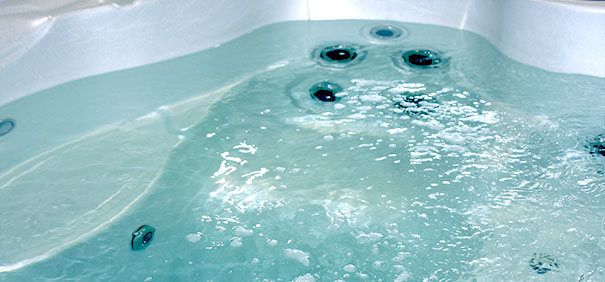
Whirlpools and spas are among the systems that trigger implementation of Standard 188.
The American Society of Heating, Refrigerating and Air-Conditioning Engineers (ASHRAE) last year published its long-awaited Standard 188, Legionellosis: Risk Management for Building Water Systems, which includes requirements for health care facilities as well as other types of buildings.
A review of the standard’s key sections and steps hospitals should take to comply with the new document provides health facilities professionals with a primer to the ASHRAE requirements.
Building water vectors
The Centers for Disease Control and Prevention (CDC) has estimated that 8,000 to 18,000 people a year are hospitalized with Legionnaires’ disease in the U.S., and that more than 10 percent of these cases are fatal.
You may also like |
| Preparing for ASHRAE’s Legionella standard |
| Infrastructures to improve patient safety |
| Benchmarking chiller and boiler systems |
|
|
One way legionellosis can occur is through exposure to Legionella associated with building water systems. Estimates suggest that only 20 percent of Legionnaires’ disease cases are outbreak-related, with the majority being sporadic cases. Outbreaks have been associated with whirlpool spas, cooling towers, decorative fountains, hotels, water systems of hospitals and nursing homes and cruise ships.
Building water systems vary substantially in their design and propensity for the transmission of Legionella. Conditions that are favorable for the amplification of Legionella growth include the presence of other bacteria, amoebae and other protozoan hosts; water temperatures of 77 to 108 degrees F; stagnant water; and scale, sediment and biofilms.
Multiple modes have been identified for transmission of Legionella to humans, including aerosolization, aspiration and direct instillation into the lung during invasive procedures. In most instances, transmission to humans occurs when water that contains Legionella is aerosolized in breathable droplets.
The presence of Legionella bacteria in building water systems is not in itself sufficient to cause legionellosis. Other factors associated with legionellosis include environmental conditions that promote the growth of Legionella, a means of transmitting the bacteria to people in the building (e.g., aerosol generation), and exposure of susceptible persons to colonized water that is inhaled or aspirated into the lungs. Legionella bacteria are not transmitted person-to-person or from the normal (non-aspirated) ingestion of contaminated water.
Looking at the standard
The most effective control for most diseases, including legionellosis, is prevention of transmission at as many points as possible in the disease’s chain of transmission. Thus, it is desirable to design interventions to prevent the transmission of legionellosis at as many points as possible.
ASHRAE Standard 188 has been developed with this concept in mind, allowing for a management planning process to address as many points of a facility’s water systems as possible. It is intended for building owners and managers and those involved in the design, construction, installation, commissioning, operation, maintenance and service of centralized building water systems and components. The purpose of the standard is to establish minimum legionellosis risk-management requirements for building water systems.
The standard applies to human-occupied commercial, institutional, multiunit residential and industrial buildings. The code has been adopted by a few jurisdictions already. Facilities professionals should check with their local authorities having jurisdiction to determine whether their facility is required to comply.
For new construction, Section 4 of the standard directs building designers to survey each building design and its water systems to determine if the design contains one of several devices or factors listed within the standard. If a building contains one of the devices or factors, it triggers the required implementation of mitigation tactics outlined later in Standard 188. Similarly, Section 4 requires owners of existing buildings to survey each existing building and its water systems — along with any new buildings and any renovations, additions or modifications — to determine whether mitigation actions in the standard must be implemented.
Section 5 of Standard 188 details the various systems or factors that trigger the implementation of the standard, including:
- Open and closed-circuit cooling towers or evaporative condensers;
- Whirlpools or spas;
- Ornamental fountains, misters, atomizers, air washes, humidifiers, or other non-potable water systems or devices that release water aerosols;
- Multiple housing units with centralized potable water heater systems;
- Buildings with more than 10 stories;
- Health care facilities with patient stays of 24 hours or more;
- Buildings containing one or more areas for the purpose of housing or treating occupants receiving treatment for burns, chemotherapy, or solid organ transplantation or bone marrow transplantation;
- Buildings containing one or more areas for the purpose of housing or treating occupants that are immunocompromised, at-risk, are taking drugs that weaken the immune system, have renal disease, diabetes or chronic lung disease;
- Buildings identified by the owner or designee as being for the purpose of housing occupants older than 65 years.
When any of these factors are present in new or existing buildings, ASHRAE Standard 188 prescribes action to be taken.
Health care steps
Section 4.3 of Standard 188 addresses health care facility requirements. ASHRAE Standard 188 allows health care facilities that are accredited and have a certified infection preventionist or an epidemiologist with a minimum of a master’s degree or equivalent to comply with the requirements of the Normative Annex A instead of the main sections of the standard.
Annex A was developed with national accreditation standards in mind, with the intent to allow accredited health care facilities to use the requirements of ASHRAE 188 in conjunction with national accreditation requirements. Health care facilities that do not meet both of the aforementioned requirements will need to follow the overall standard and cannot use the annex requirements only.
Both the overall standard and Normative Annex A are based around a water management program that is outlined on this page.
Normative Annex A focuses on the health facility’s designated team. The requirements for this team are outlined in Section A2, which states that the team is to be led by a designated responsible individual who is selected by senior organizational leadership. This individual is to be selected from a group responsible for the compliance with the physical environment of care standards.
- In addition to the designated leader, the team must consist of at least:
- A person with senior organizational leadership who has authority to make command decisions about water restrictions or other response measures.
- A member of the facility management staff who is familiar with the building water systems.
- A member of the health care facility infection prevention and control program who is a certified infection preventionist or an epidemiologist with a minimum of a master’s degree or equivalent.
The designated team is responsible for developing, implementing and documenting all applicable requirements of the water systems management program and any other activities assigned by senior organizational leadership. To meet accrediting organization requirements in addition to meeting Normative Annex A requirements, the designated team will need to be a multidisciplinary one that also includes individuals from the areas of the facility involved in the management program of the water systems.
Among the key components of the building water system management program are the water system flow diagrams required in Section A3 of the Normative Annex A. These diagrams graphically represent the water systems and must include:
- All water supply sources.
- All water supply service entrances.
- All water treatment systems and control measures, including disinfection and filtration.
- All water processing steps including, but not limited to, receiving, conditioning, storing, heating, cooling, recirculating and distributing.
- All areas where hazardous conditions may contribute to the potential for Legionella amplification including, but not limited to, all clinical support areas, including dietary and central sterile; all patient care areas including dialysis, respiratory therapy and hydrotherapy; all water use end points including cooling towers, open water features, spas and whirlpools, pools, ice machines and humidifiers; and other points determined by the designated team.
The water system flow diagrams should be a step-by-step representation of the building water system that includes all water processing steps and identifies areas of the health care facility designated for specialized care. The diagrams are to be used by the designated team to determine the areas of the facility that have the greatest risk of Legionella. These areas should be part of the legionellosis risk-management plan. The water system flow diagrams should also be used to verify that the necessary representation exists on the designated team by confirming that the risk areas shown on the diagram are properly represented by staff.
Section A4 of the annex details the requirements for the risk-management plan, which must contain all information pertaining to the development and implementation of legionellosis risk-management activities for the health care facility. The plan should include, but is not limited to, the following items:
- The name, title and contact information for the designated team leader and the role and contact information for other designated team members.
- The water system flow diagrams.
- The systematic evaluation of physical and chemical conditions associated with each step in the water system flow diagrams to determine where hazardous conditions can occur in the building water systems and where control measures could be applied.
- Identification of areas with higher probability of infection throughout the facility based on the intended use of water-based processes and the relative vulnerability of patients to legionellosis in areas designated for specialized care.
- An analysis of the results of the aforementioned evaluation and identification with an estimate of the likelihood of legionellosis.
- The procedures required for prevention and control of legionellosis associated with the health care facility’s building water systems. The procedures shall include identification of the control locations, determination of the control limits, development of monitoring procedures and determination of corrective actions.
- Assignment of responsibility for each action required by the legionellosis risk-management plan.
- Documentation of all aspects of the legionellosis risk-management plan, including development, implementation, verification and validation.
- Disease prevention responses to elevated risk through monitoring of disease surveillance including, but not limited to, notification of relevant infection prevention and control (IC), environment of care (EC)/facilities management and provider staff of any test results that indicate elevated potential for Legionella amplification, transmission or infection; procedures to be implemented when monitoring of control measures indicates deviation from control limits; and a determination of if, when, where and how environmental testing for Legionella is to be performed.
- Actions to be taken if the IC department identifies probable or confirmed legionellosis cases. The actions shall follow established IC processes, including compliance with the most recent requirements of the CDC or other regional or national authority; implementation of remediation actions as necessary; and evaluation of the legionellosis risk-management plan and any necessary changes.
- Procedures established by the designated team to confirm initially and on an ongoing basis that the legionellosis risk-management plan is implemented as designed (verification) and that, when implemented as designed, the legionellosis risk-management plan effectively controls the hazardous conditions throughout the building water systems (validation).
Annual evaluation
Section A5 of Normative Annex A requires the designated team to do an annual evaluation for each existing building and to estimate the likelihood of legionellosis occurrence in areas where hazardous conditions are determined to exist in the building water systems and in areas of higher probability of infection based on the intended use of the water-based processes and the relative vulnerability of patients. This evaluation process is to be repeated each time a building is changed if one or more water systems are affected, whenever major maintenance is performed on a water system, or when there is a water service disruption. Section A5 also requires the designated team to review the scope of all new construction and renovations to determine the risk of the construction regarding legionellosis.
Section A6 requires the risk-management plan to include procedures for building water systems. The specific systems that must be considered are potable water systems, cooling towers and evaporative condensers, pools and spas, and ornamental fountains and open water features.
The designated team must evaluate each of these systems and determine whether there is sufficient risk within the system to include the required procedures in the management plan — or provide a rationale as to why there wasn’t sufficient risk to do so. If the team determines that there is sufficient risk, procedures for potable water systems should be provided for system start-ups and shutdowns, system maintenance and water treatment.
If the team includes cooling towers and evaporative condensers in the management plan, additional procedures should include disinfection of cooling towers and evaporative condensers; and maintenance and operation of the cooling tower makeup valve.
If the team includes pools or spas in the plan, documentation must be provided regarding the operation and maintenance of these systems per the manufacturer’s instructions.
If ornamental fountains and open water features are included in the plan, procedures should be provided for maintenance and operation of the fountain or feature including the water treatment procedures; draining, cleaning, disinfecting and refilling; maintenance and operation of any submerged lights; and maintenance and operation of circulating pumps.
Finally, health care facilities that do not meet both of the requirements of Section 4.3 — those that are not accredited or do not have a certified infection preventionist or degreed epidemiologist within their IC program — will need to follow the overall standard.
The overall standard requires that buildings with any of the previously listed systems or triggering factors from Section 5 meet all of the applicable requirements contained in sections 6 through 8 of the standard, which are an expansion of Normative Annex A sections A2 through A6 previously described.
While complying with the overall standard may seem like a significant increase in requirements being applied to building water systems, it has been demonstrated clearly by best practice facilities that this type of risk-based management plan significantly will reduce the risk of exposure of immunocompromised individuals to harmful Legionella bacteria.
[A longer version of this article originally appeared in the Winter 2015 edition of Inside ASHE, © American Society for Healthcare Engineering 2015 and reprinted with permission.]
Jonathan Flannery, CHFM, FASHE, MHSA, FACHE, is senior associate director of advocacy for the American Society for Healthcare Engineering. He can be reached at jflannery@aha.org.




